The Xiaomi Mi 10 Ultra first came out in August 2020. To date, we at DXOMARK have had time to test only its rear camera performance so far (though we expect to publish results for selfie soon). In this review, we present a summary of our test results for the Mi 10 Ultra’s display.
Key display specifications:
- 6.67-inch OLED screen, 19.5:9 aspect ratio
- Small notch top left corner
- Resolution: 1080 x 2340 px, screen pixel density: 386 ppi
- Refresh rate: 120 Hz
- Battery: 4500 mAh
About DXOMARK Display tests: For scoring and analysis in our smartphone and other display reviews, DXOMARK engineers perform a variety of objective and perceptual tests under controlled lab and real-life conditions. This article highlights the most important results of our testing. Note that we evaluate display attributes using only the device’s built-in display hardware and default apps. (For in-depth information about how we evaluate smartphone and other displays, check out our articles, “How DXOMARK tests display quality” and “A closer look at DXOMARK Display testing.”)
Test summary
Scoring
Sub-scores and attributes included in the calculations of the global score.
 Xiaomi Mi 10 Ultra
Xiaomi Mi 10 Ultra


With an overall score of 73, Xiaomi Mi 10 Ultra lands in the bottom half of our display rankings thus far, pulled way down by a low score in our video tests. (Only its gaming cousin, the Xiaomi Black Shark 3 Pro, did worse.) The Mi 10 Ultra had only middling scores for readability; happily, it tied for second place with the Oppo Find X2 Pro for color; it was somewhat off the pace for both motion and touch; but despite good handling of aliasing, it came in dead last overall for artifacts.
Let’s take a closer look at the specifics of the Mi 10 Ultra’s performance in our new Display protocol tests.
Analyses and comparisons
The DXOMARK Display overall score of 73 for the Xiaomi Mi 10 Ultra is derived from its scores across six categories: readability, color, video, motion, touch, and artifacts. In this section, we’ll take a closer look at these display quality sub-scores and explain what they mean for the user, and we will compare the Mi 10 Ultra’s performance in several areas against three of its principal competitors, the OnePlus 8 Pro, the Samsung Galaxy Note20 Ultra 5G, and the Xiaomi Black Shark 3 Pro.

Readability
Xiaomi Mi 10 Ultra
61
76
DXOMARK uses the device’s gallery app to show static (still image) content when measuring the device’s display for brightness, contrast, gamma, and blue light impact, etc.
The most important aspect of a display is how readable it is in various ambient lighting situations. Ideally, a user whose phone automatically adjusts display brightness should rarely if ever have to change the settings manually to make it bright enough to see properly (or to make it dim enough in nighttime conditions to make it comfortable to read).
First off, the Mi 10 Ultra’s display is quite dark for good readability in low-light conditions. This said, it is quite good in indoor conditions, even though the screen could be brighter, and while it is too dark in the shade, it can be easily read under direct sunlight.
Below you can see the relationship between brightness and contrast on the Mi 10 Ultra and its competitors under different lighting conditions. Note that when contrast decreases, it is due to the ambient light reflected by the device — the more intense the ambient light, the lower the device’s contrast, unless it can compensate by providing more luminance.
In indoor conditions (as in the comparison shots below), the Mi 10 Ultra display (first on the left) is darker than the OnePlus and the Samsung, but still readable, even though the details in the dark parts of the image are somewhat harder to see. By contrast, all such details in dark areas are entirely lost in the Black Shark 3 Pro’s rendering on the far right:

In the photo array below, though, even the Black Shark is easier to read than the Mi 10 Ultra in the shade in bright outdoor conditions:

Under direct sunlight (as in the shots below), the Mi 10 Ultra and OnePlus 8 Pro show good detail; the Note20 Ultra is much darker; and once again the Black Shark is nearly unreadable:

The Mi 10 Ultra takes too much time when responding to both rising and falling light levels, but it does both quite smoothly.
As is the case to some degree for all smartphone displays, the Mi 10 Ultra display loses some brightness and contrast when viewed at an angle. (Note that you can click on any of the device names in the chart below to select or deselect them so you can see their individual results and/or compare one or more at a time as you wish.)
In our perceptual tests, the Black Shark is clearly darker than the others in the on-axis photos below; and while Mi 10 Ultra (first on left) is a tad darker than the OnePlus and Samsung devices, it is still easily readable:

Viewed at an angle of 45°, the Mi 10 Ultra is still quite readable despite a noticeable drop in luminance and contrast, which contributes to a loss of detail:

As for night viewing, the Mi 10 Ultra is quite dark for low-light conditions, as seen below:
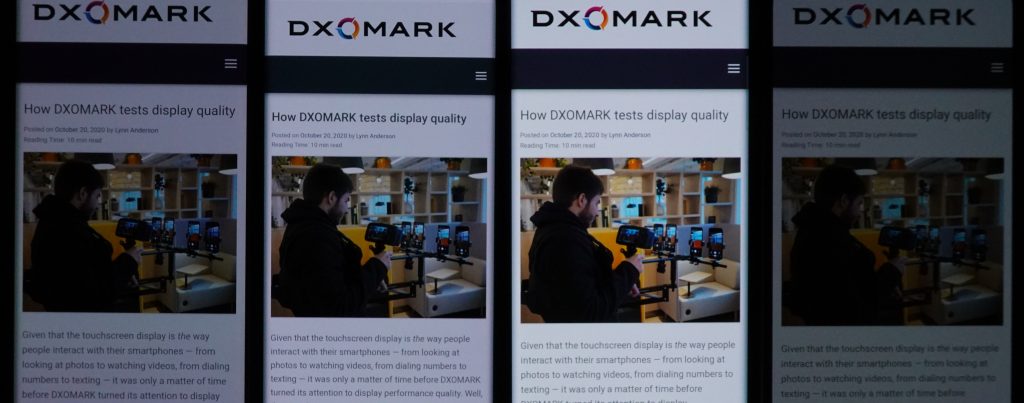
Moreover, it is still too dim when the BLF feature is on:
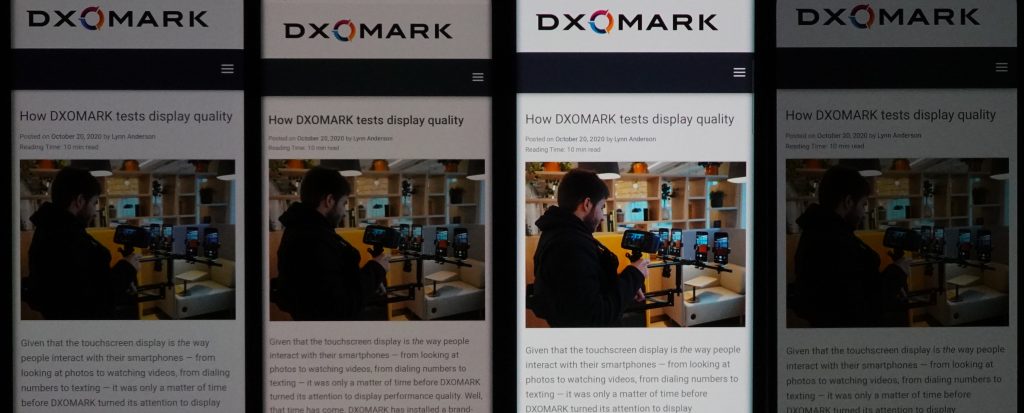

Color
Xiaomi Mi 10 Ultra
80
92
DXOMARK uses the device’s gallery app to show static (still image) content when measuring the device’s display for white point, gamut, uniformity, color fidelity, and blue light filter impact, etc.
At 80 points, the Mi 10 Ultra tied for second in color with the Oppo Find X2 Pro in our rankings so far, with both devices just one point above the Samsung Galaxy Note20 Ultra 5G at 79, but a ways behind the frontrunner, the OnePlus 8 Pro at 88 points.
The Mi 10 Ultra showed very good color both indoors…

…and outdoors (the Mi 10 Ultra’s colors were slightly washed out, but still acceptable for the lighting conditions):

As we touched on in the readability section above, the Mi 10 Ultra’s display brightness is not uniform across the screen, with a brighter spot in the lower half of the device (left side in landscape mode below) and along the edges. But color is not uniform, either, as you can see in the example below:

Angle viewing
Users don’t consistently look at their smartphones full-on, sometimes holding them at an angle, which affects how well they can see certain aspects of the display.
The overall field in the left-hand chart below shows the Xiaomi Mi 10 Ultra’s color tendencies. In the right-hand chart (essentially a closeup of the left chart), each dot represents a measurement taken at a discrete angle and distance from the device; dots inside the inner circle exhibit no color shift in angle; those between the inner and outer circle have shifts that are just noticeable by trained experts; but those falling outside the outer circle are noticeable. As you can see, the Mi 10 Ultra moves from the bluer parts on the map towards yellow:
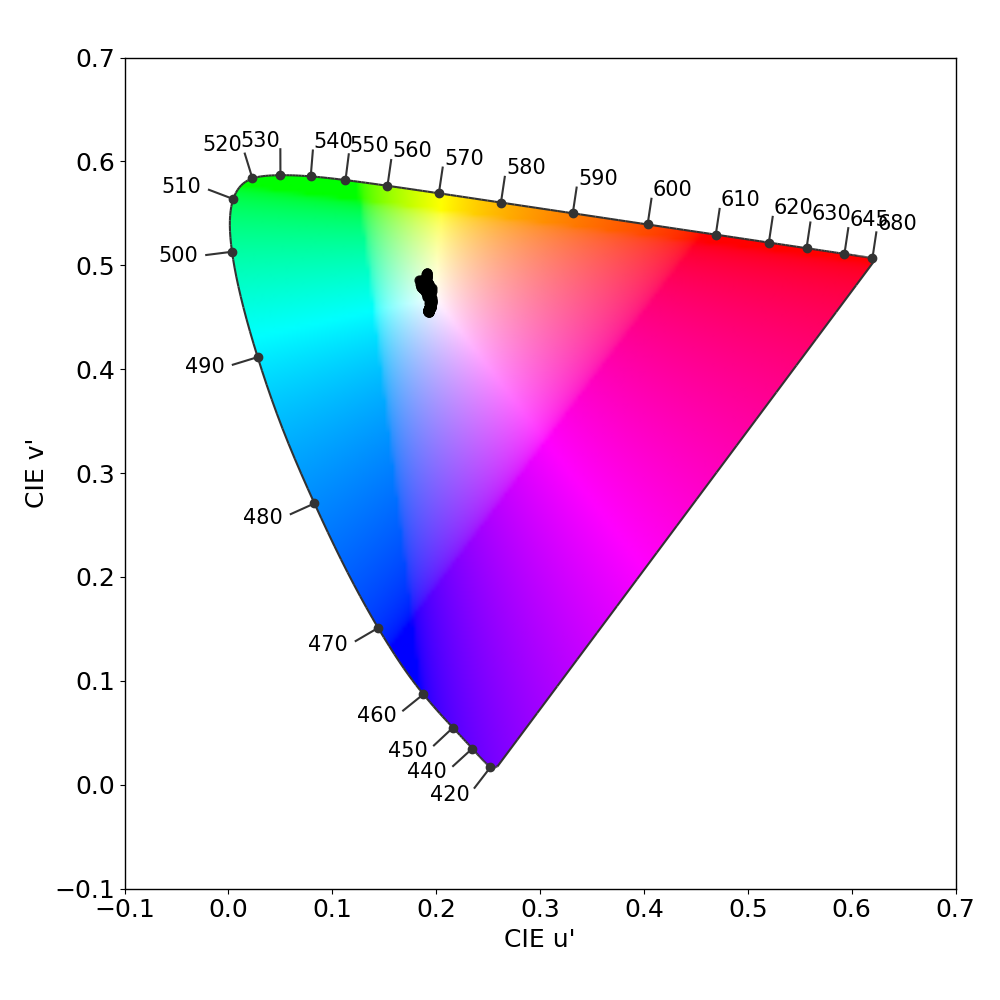

As is nearly always the case, our perceptual tests confirm the objective findings. In the on-angle shots below, the Xiaomi Mi 10 Ultra shows a slight tendency toward blue in its rendering:
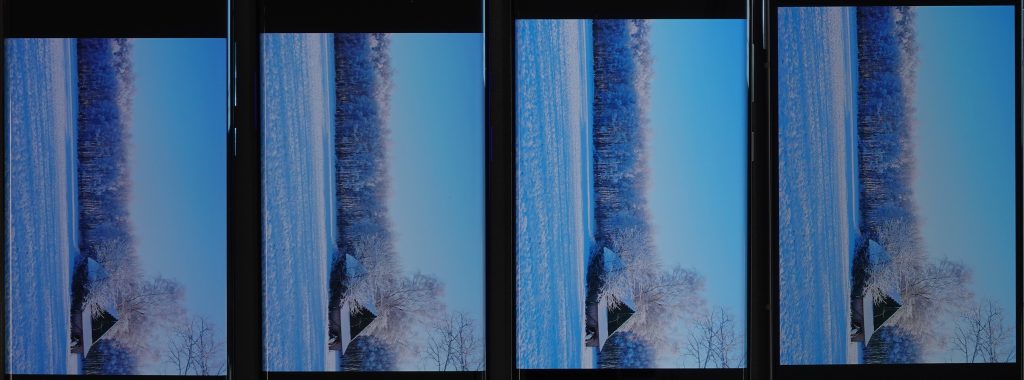
At 45°, however, the Mi 10 Ultra takes a noticeable turn toward yellow:

In addition to the yellow cast on-angle, the Mi 10 Ultra also shows color shifts along the edges of the display. And just in passing, when on, the blue light filter also shifts the Mi 10 Ultra’s color into yellow cast territory.

Video
Xiaomi Mi 10 Ultra
38
91
DXOMARK uses the device’s video (or browser) app to show dynamic content when measuring the device’s display for brightness, contrast, gamma, and color.
Second from the bottom in video performance, with only its Xiaomi cousin, the Black Shark 3 Pro, doing worse (at 31 points), the Mi 10 Ultra is clearly not the best choice for watching videos. To begin with, the Mi 10 Ultra is dark for both HDR10 and SDR content:

Further, its contrast is poor, as you can see from the lack of bright highlights below:
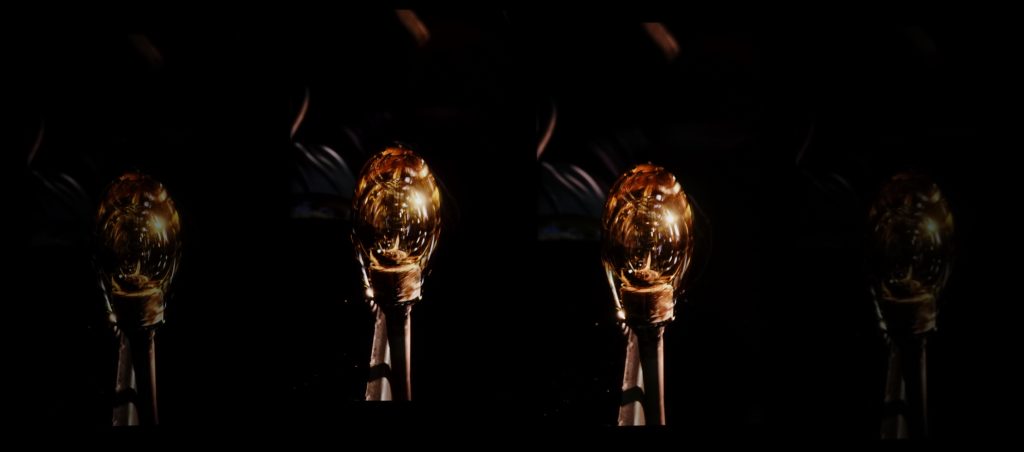
Our measurements for gamma show that the Mi 10 Ultra lacks a lot of detail in both darker and brighter areas; and as for video color, the Mi 10 Ultra shows a blue cast — and this said, the analysis was hard to perform due to its low brightness level:
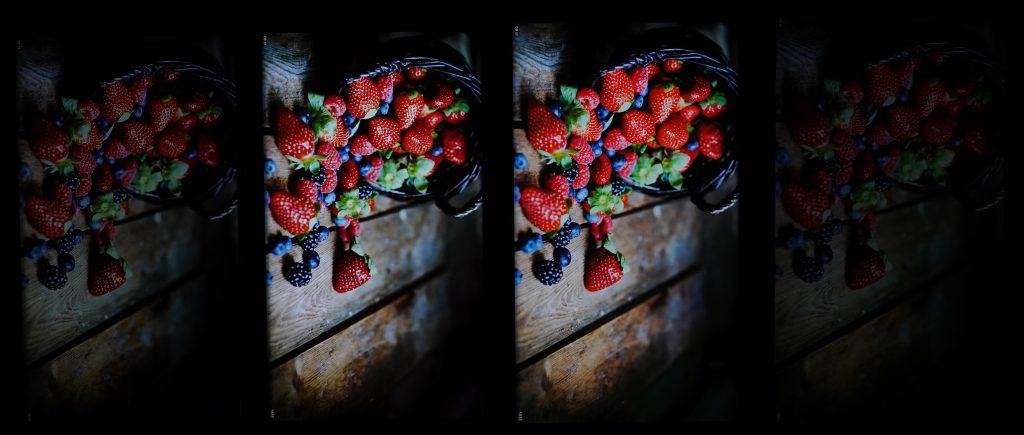
Skin tones on the Mi 10 Ultra show the same blue cast (and here, too, our testers had the same difficulties in performing the analysis):
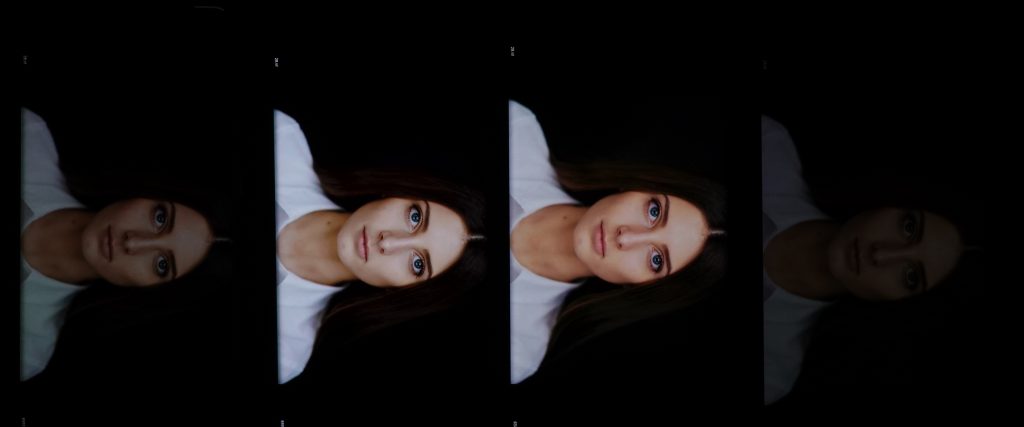

Motion
Xiaomi Mi 10 Ultra
75
87
Objectively, the Xiaomi Mi 10 Ultra showed frame drops and stutter at 30 fps and 60 fps. Sometimes these objective measurements don’t make themselves apparent during perceptual testing, but in this instance, our testers observed regular stuttering when playing video games.
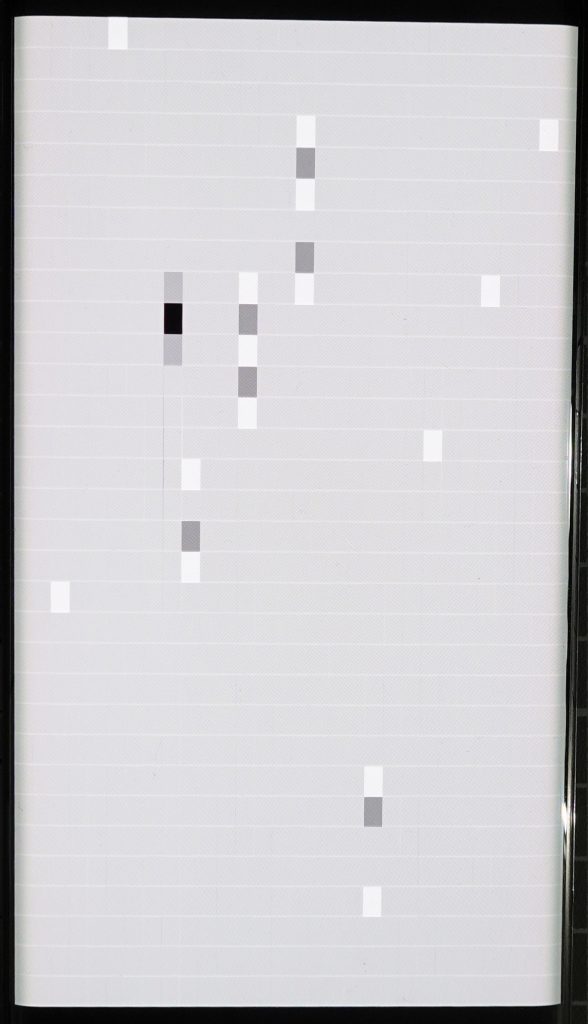
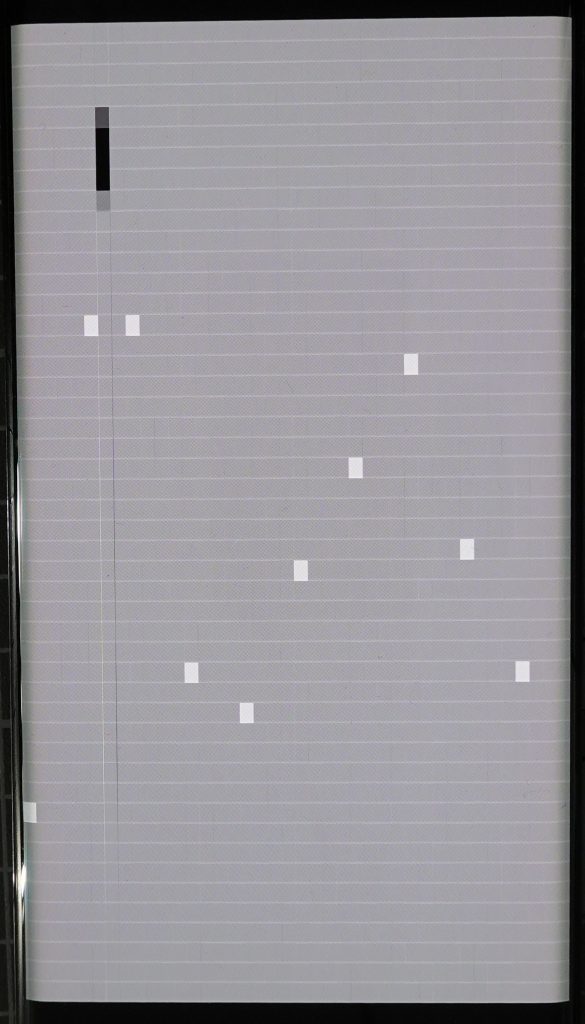
For motion blur, the Xiaomi has visible frame duplications; but the Mi 10 Ultra plays videos instantly, making it one of the more reactive devices we’ve tested.

Touch
Xiaomi Mi 10 Ultra
67
85
The Xiaomi Mi 10 Ultra is not accurate when zooming in a picture, as it does not follow the user’s finger movements. Nor is it smooth enough when playing video games, although it performs well when browsing on the internet and moving between pictures in the gallery app.

Artifacts
Xiaomi Mi 10 Ultra
73
86
The Mi 10 Ultra came in last for display artifacts among all devices tested thus far. For one thing, its notch is quite visible, which can affect the viewing experience a bit when browsing or playing games in full-screen mode.
All smartphone screens have some degree of reflectance, particularly in bright light; the Xiaomi device is neither better nor worse than other devices in this regard. And, too, all devices flicker to some degree; Mi 10 Ultra’s flicker is quite well managed. This said, flicker is not likely to affect most users’ viewing experience. (Click on any of the device names in the chart below to select or deselect them so you can see their individual results and/or compare one or more at a time as you wish.)
As you can see in the closeups below, the Xiaomi Mi 10 Ultra handled aliasing well, with the “stair-step” appearance along curved contours not as pronounced as on many other devices.


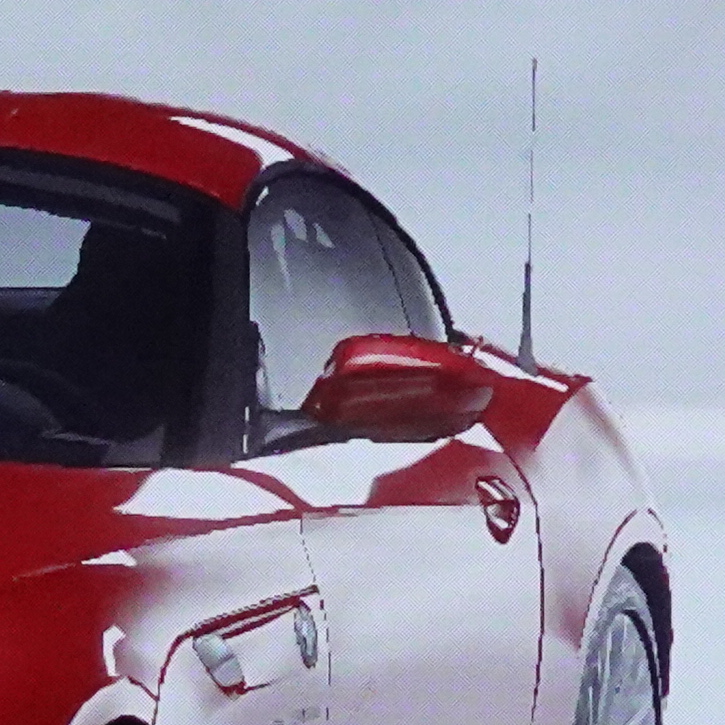
Unfortunately, the Xiaomi Mi 10 Ultra really struggles with ghost touches, sometimes executing unwanted moves when playing video games, which cost it quite a few points. However, it manages judder very well, properly performing 3:2 pulldown for 24 fps content, thanks to its 120 Hz refresh rate (120 being a multiple of 24), and showing no visible judder at 30 or 60 fps.
Conclusion
A slightly dark display and problems with color rendering affect the Xiaomi Mi 10 Ultra’s overall display score, but its most serious problems are how it handles video content, with output that was sometimes too dark to be evaluated, and its mishandling of ghost touches. On the plus side, the Xiaomi shows very few frame drops and has good control of motion blur. Touch accuracy was mixed: good for gallery app use cases, but a little under par for gaming; overall touch smoothness was very good. Other high points were its control of aliasing and judder, but these may not be enough to overcome its deficits in readability, color, and especially video.
Pros
- Readability is quite good in indoor conditions and well managed under direct sunlight.
- BLF does not really impact the brightness.
- The device is smooth when browsing and looking at pictures.
- Good color fidelity in indoor and low-light conditions
Cons
- Readability is low in shade due to lack of luminance.
- Dark and bright tones are not properly displayed when watching HDR10 content, and brightness is too low in videos generally.
- Jerkiness impacts the user experience when gaming, as do ghost touches.
- Touch is not smooth enough and touches are not detected on the edges of the device.


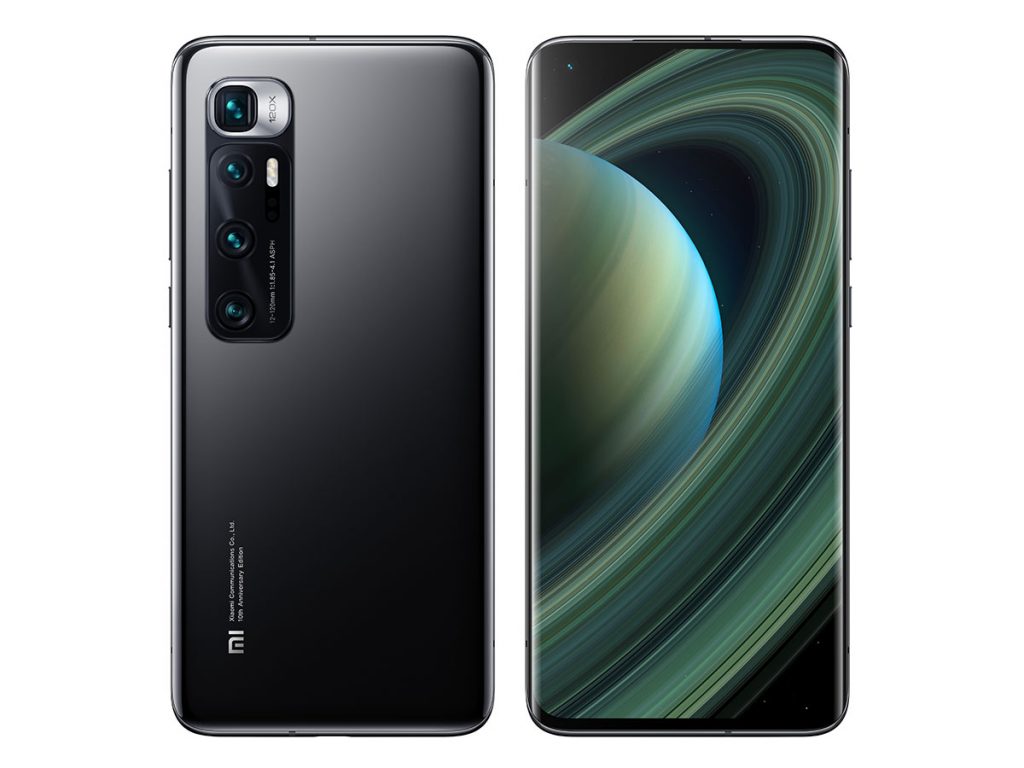
DXOMARK encourages its readers to share comments on the articles. To read or post comments, Disqus cookies are required. Change your Cookies Preferences and read more about our Comment Policy.